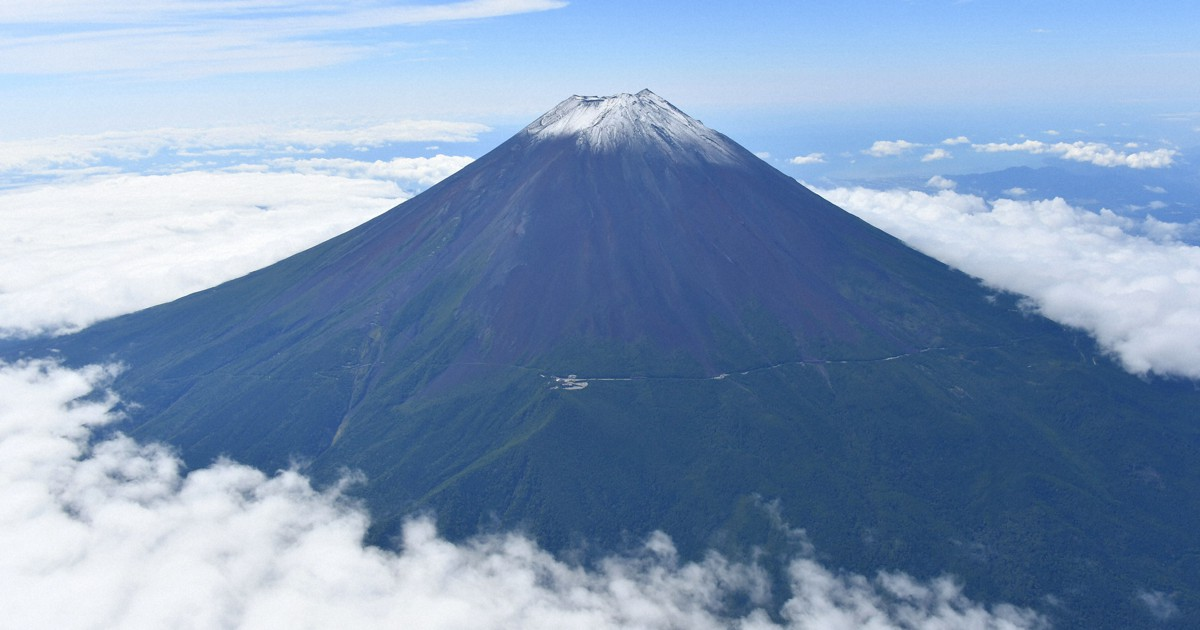Mount Fuji, Japan’s tallest peak and a revered national symbol, is typically snow-capped by early October, signaling the advent of winter. This year, however, as November nears, the mountain remains bare.
According to the Kofu Local Meteorological Office, a rare combination of ongoing high temperatures and rainfall has delayed the snow on Mount Fuji, a phenomenon unseen in 130 years of recorded history. This delay is part of a broader trend affecting snowpacks across the Northern Hemisphere, driven by both global warming and natural weather patterns.
Rising Temperatures Delay Snowfall
This summer, Japan experienced record-breaking temperatures, with June to August registering an average increase of 1.76°C above normal levels. September’s weather compounded the problem as warmer air from the south, aided by a shift in the subtropical jet stream, lingered over Japan.
Read : Prince Hisahito Becomes Japan’s First Royal Male to Turn 18 in 40 Years Amid Population Crisis
By October, the country was still experiencing unseasonable heat, with more than 74 cities recording temperatures above 30°C in early October, a phenomenon made three times more likely due to climate change. Climate experts point to both the El Niño pattern, which brought intense heat, and human-driven global warming as contributing factors to this snowless anomaly.
Climate Change and Mount Fuji’s Future
The unusual lack of snow raises concerns about Mount Fuji’s future as a winter icon and a critical water source. Snowpacks in mountainous regions are vital for replenishing water supplies, and a reduction or delay in snow can affect everything from drinking water to agriculture.
Read : Holes Spotted in Screen Built to Block View of Mt. Fuji in Japan
This change also impacts the mountain’s appeal to tourists and locals who associate it with its snow-capped image. According to the Climate Central research group, climate change is reshaping seasons, with warmer winters and reduced snow levels becoming more common. While temperatures are expected to drop, signaling eventual snowfall, this delay highlights a future where Mount Fuji might regularly face milder winters.
Mount Fuji is more than just a tourist destination; it is also a UNESCO World Heritage site steeped in cultural and spiritual significance. Warmer winters could make snow a rare occurrence on Fuji’s peak, which might alter its ecological and cultural value. Local economies dependent on the tourism season are also at risk, as fewer snow-capped days could mean a shorter season for winter-related activities.
Overtourism: Another Challenge for Mount Fuji
Mount Fuji, known for its scenic views and perfect symmetry, draws hundreds of thousands of visitors every year. However, recent overtourism has raised concerns about the mountain’s sustainability and the well-being of local communities.

This summer, as travel restrictions eased, a record number of tourists visited Japan, creating challenges for the communities surrounding Mount Fuji. The tourism influx has led to issues such as littering, trespassing, and even illegal parking, disrupting local life and damaging natural resources.
To tackle these problems, authorities have imposed entry fees and visitor caps. Climbers now pay a fee of 2,000 yen (around £13) per person, and a daily limit of 4,000 climbers aims to prevent overcrowding. While these measures help manage the crowds, locals still face challenges from disruptive behavior.
In Yamanashi prefecture, officials have even taken measures to block certain viewpoints to protect areas from misuse, frustrated with tourists disregarding rules and damaging the surroundings. Other cities across Japan, including Kyoto, have faced similar challenges, with residents voicing concerns over tourist behavior and seeking measures to protect local culture and resources.
The future of Mount Fuji reflects the broader impacts of climate change and overtourism on iconic natural sites worldwide. The combination of record-high temperatures, delayed snowfall, and tourism pressures calls for a reevaluation of how Japan’s national icon is preserved and protected in a changing climate.
let’s enjoy few years on earth with peace and happiness….✍🏼🙏

